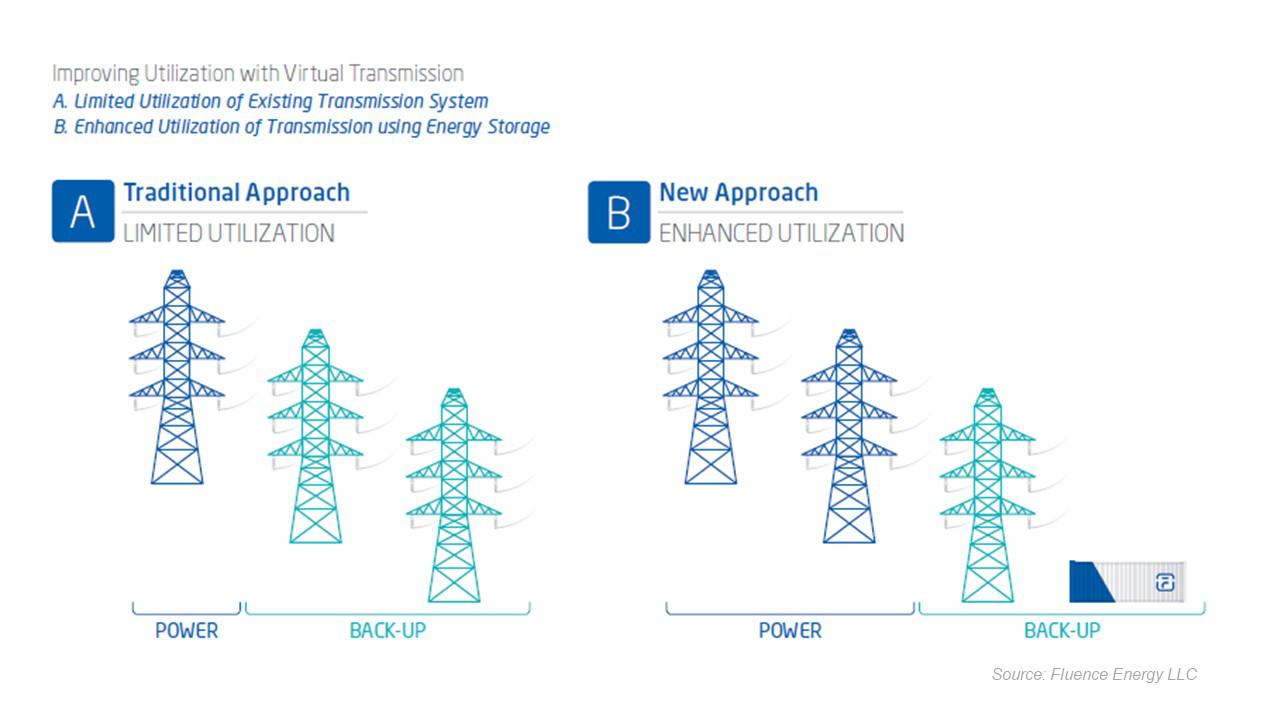by Blackridge Research
The latest trend is that power transmission companies around the world are increasingly looking at energy storage technology to defer or replace transmission system upgrades. How this works is energy storage is placed along a transmission line and operated to inject or absorb power, mimicking transmission line flows. Going with names like “virtual transmission” in Australia and “GridBooster” in Germany, projects totaling over 3 GW of capacity are poised to increase system efficiency and reliability across the world.
 Storage as transmission offers an array of benefits over traditional transmission infrastructure. They are faster to deploy, have smaller footprint, flexibility, and relocatability, and they offer other additional services including the ability to provide reactive power, frequency and voltage control and special protection schemes. They also act as revenue streams, while concurrently offering network support.
Storage as transmission offers an array of benefits over traditional transmission infrastructure. They are faster to deploy, have smaller footprint, flexibility, and relocatability, and they offer other additional services including the ability to provide reactive power, frequency and voltage control and special protection schemes. They also act as revenue streams, while concurrently offering network support.
- RTE, a French utility company, is considering a 40 MW “virtual transmission line” project called RINGO. The project seeks to attain grid integration of renewable energy and optimize electricity currents on its network.
- The German grid development plan, developed by the utilities who own the transmission lines in the country, includes a massive 1.3 GW of energy storage to achieve grid stability and lower network costs.
- In India, the public-owned utility company based in the new state of Andhra Pradesh—the Andhra Pradesh Transmission Company—has proposed in January 2019 between 250 and 500 MW of energy storage to add capacity on its transmission network.
- In the US, Pacific Gas & Electric (PCG) is following through on a 10 MW energy storage project as part of a portfolio of transmission solutions during its regional transmission planning process. This undertaking will be the first one in the country to provide congestion relief in the market.
Blackridge Research is a pure play energy research company covering the Global Energy Transformation.








